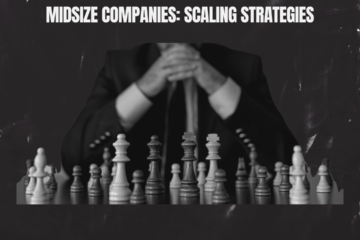Comprehensive Risk Management: Strategies for Midsize Financial Management
Risk management and compliance play a pivotal role in ensuring the long-term success and sustainability of midsize businesses. For financial managers, implementing robust risk management practices not only protects assets but also helps build stakeholder confidence and align operations with regulatory requirements. A well-rounded approach to risk management combines proactive identification, mitigation strategies, and compliance with ever-evolving legal standards.
1. The Role of Risk Management in Financial Success
Risk management is about identifying potential threats and preparing responses that mitigate negative impacts. For midsize firms, risks span multiple domains, including operational inefficiencies, market volatility, cybersecurity threats, and regulatory non-compliance. Proactive risk management ensures business continuity and fosters resilience in competitive and uncertain markets.
For example, firms that integrated risk management into their strategic planning were 43% more likely to achieve financial stability during the COVID-19 crisis, according to a study by McKinsey.
2. Types of Risks Impacting Midsize Businesses
Understanding the spectrum of risks is essential to creating an effective risk management framework. Common risk categories include:
Operational Risks: Inefficiencies, outdated technology, or employee-related issues can disrupt daily operations.
Financial Risks: Interest rate fluctuations, foreign exchange exposure, and liquidity issues directly impact financial health.
Regulatory Risks: Failure to comply with industry-specific laws can result in fines, legal action, or reputational damage.
Cybersecurity Risks: Increasing reliance on digital systems makes businesses vulnerable to data breaches and cyberattacks.
Bloomberg highlights that midsize companies face heightened cybersecurity risks due to limited IT resources, emphasizing the need for scalable cybersecurity solutions.
3. Building a Risk Management Framework
A structured framework is key to effective risk management. Businesses can break this process into actionable steps:
Risk Identification: Identify vulnerabilities across operations, financial systems, and external factors.
Risk Assessment: Evaluate the likelihood and potential impact of each risk. Assign priority levels to focus resources effectively.
Mitigation Strategies: Develop plans to minimize risks, such as diversifying investments, improving internal controls, or enhancing employee training.
Monitoring and Reviewing: Risks evolve with market conditions. Regularly monitor identified risks and adjust strategies accordingly.
The COSO Enterprise Risk Management (ERM) framework is a valuable tool for midsize financial management. It provides a structured approach to integrating risk management with broader strategic objectives.
4. Importance of Compliance in Risk Management
Compliance serves as a safeguard against regulatory risks. Adhering to laws and industry standards protects businesses from fines and legal challenges while fostering trust with customers and partners.
Key compliance areas include:
Financial Reporting Standards: Ensure transparency and accuracy in financial statements. The Sarbanes-Oxley Act (SOX) outlines critical compliance requirements for financial reporting.
Data Protection Laws: Regulations like GDPR and CCPA mandate stringent data protection practices, particularly for customer information.
Industry-Specific Guidelines: Sectors such as healthcare or finance may have additional compliance requirements.
Firms prioritizing compliance benefit from enhanced operational efficiency and risk mitigation. The Wall Street Journal reports that companies investing in compliance technologies reduced regulatory penalties by 35% on average over the past five years.
5. Leveraging Technology for Risk Management
Modern technologies offer scalable solutions for identifying and mitigating risks:
Data Analytics: Advanced analytics tools provide insights into potential vulnerabilities and trends, enabling businesses to predict and prepare for risks.
Cybersecurity Tools: Firewalls, intrusion detection systems, and endpoint protection ensure data security and prevent breaches.
RegTech Solutions: Regulatory technology simplifies compliance by automating reporting, monitoring changes in regulations, and ensuring adherence.
According to McKinsey, firms integrating technology into their risk management strategies achieve a 25% improvement in operational resilience, highlighting the importance of digital transformation.
6. The Financial Benefits of Risk Management
Investing in risk management and compliance yields significant financial returns. By preventing losses from fraud, cyberattacks, or legal challenges, firms preserve resources and improve profitability. Additionally, robust risk management enhances creditworthiness, making it easier to secure financing for growth initiatives.
7. Cultivating a Risk-Aware Culture
A successful risk management strategy extends beyond policies and procedures. It requires a cultural shift where employees at all levels understand their roles in identifying and addressing risks.
Training programs, clear communication, and leadership buy-in are critical for fostering a risk-aware culture. Firms with engaged employees report fewer incidents and quicker recovery times when risks materialize, as highlighted in research by the Boston Consulting Group (BCG).
8. Continuous Improvement in Risk Management
Risk management is not a one-time effort. It requires ongoing evaluation and adaptation to changing market dynamics, regulatory updates, and technological advancements. Regular audits, scenario planning, and feedback loops ensure that the risk management framework remains effective over time.
Conclusion
Comprehensive risk management and compliance are essential for navigating the complexities of modern financial management. By identifying and mitigating risks, leveraging technology, and maintaining regulatory compliance, midsize businesses can achieve sustainable growth while safeguarding their operations and reputation.
Strategic Financial Hub provides resources for developing tailored risk management frameworks that align with organizational objectives. Visit the website for more guidance on protecting your business and driving long-term success.


